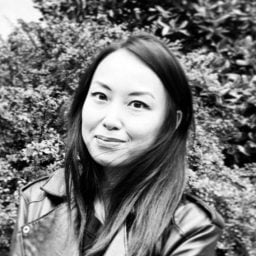Art & Exhibitions
Artists Gave a Serious Glow-Up to L.A. Natural History Museum’s Dioramas
To mark the centennial of its diorama halls, the museum invited artists to craft their own dioramic scenes.
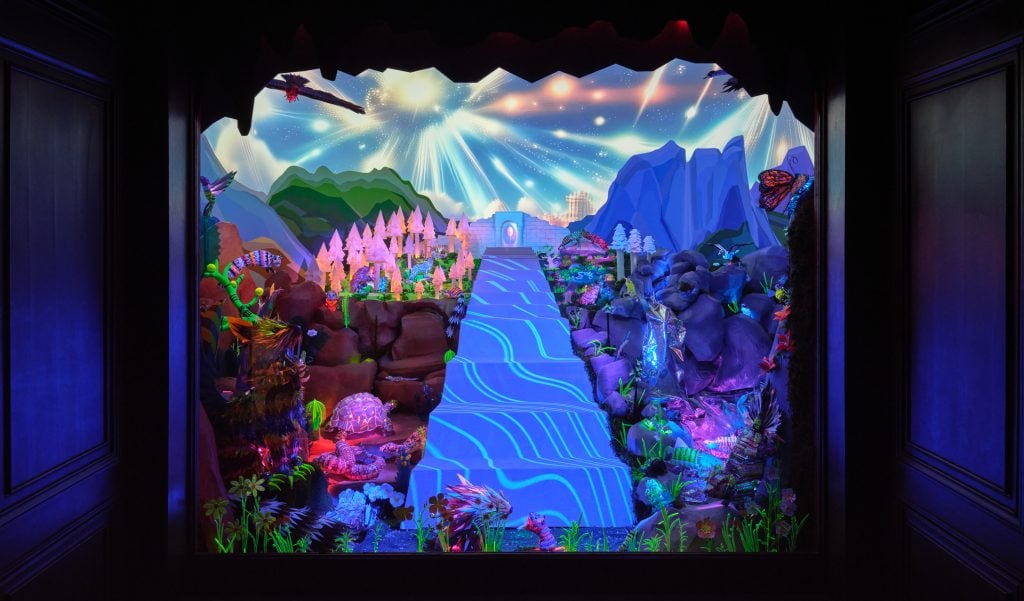
Visitors to the Natural History Museum of L.A. County’s newly reopened diorama hall might have cause to pause in their tracks. Amid realistic bays of kangaroos and snow leopards are three unlikely exhibits. In one, a pair of antelopes is positioned next to an unnatural lake of glass and graffitied boulders. Another depicts eagles against a time-lapse projection of the Los Angeles River. And yet one more is an otherworldly UV-lit scene populated with psychedelic snakes and turtles. They are, in short, not your grandma’s dioramas.
These scenes have been created by artists as part of the institution’s “Reframing Dioramas: The Art of Preserving Wilderness,” an exhibition marking the centennial of its diorama halls, while offering new ways of seeing these staple displays in natural history museums. The point, said NHMLAC’s exhibition developer Matt Davis, is less to revisit the past than to bring the diorama into the present.
“We look at these displays as old-fashioned, but when you actually survey visitors, they love dioramas,” Davis told me over the phone. “It’s maybe not the dioramas that need to change. It’s just the way we talk about them, or we need to help people read them better.”
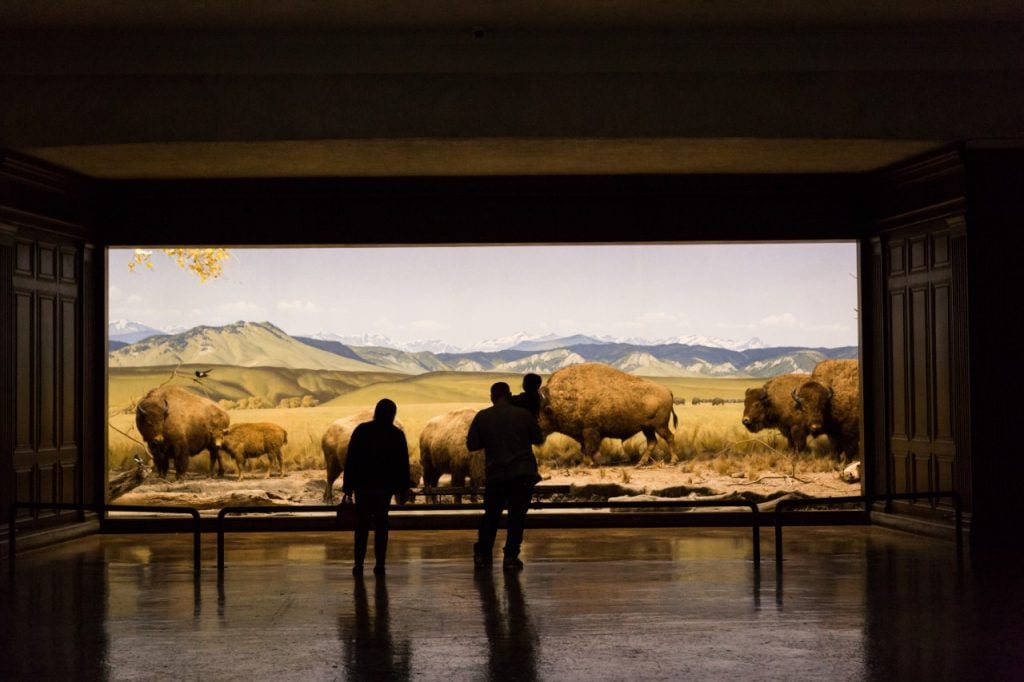
Diorama at the Natural History Museum of Los Angeles County. Photo courtesy of NHMLAC.
When the NHMLAC opened its diorama halls in the 1920s, they were a revelation. Gone were the glass cases haphazardly stacked with animal bones and hides; in their place were realistic, three-dimensional displays recreating specific habitats with lifelike models. These early dioramas included bays of bison and beavers, mountain goats and sea lions; they wowed visitors, some 50,000 of whom arrived to view the museum’s hall of African mammals, the first in the country.
These showcases were collaborative outings—exhibits that called on the collective expertise of researchers, painters, and taxidermists. Scenes had to be composed, ecosystems accurately represented, animals modeled, and backgrounds painted. In the words of the museum’s then-senior curator Melville Lincoln, “Science furnishes the material, art the finished picture.”
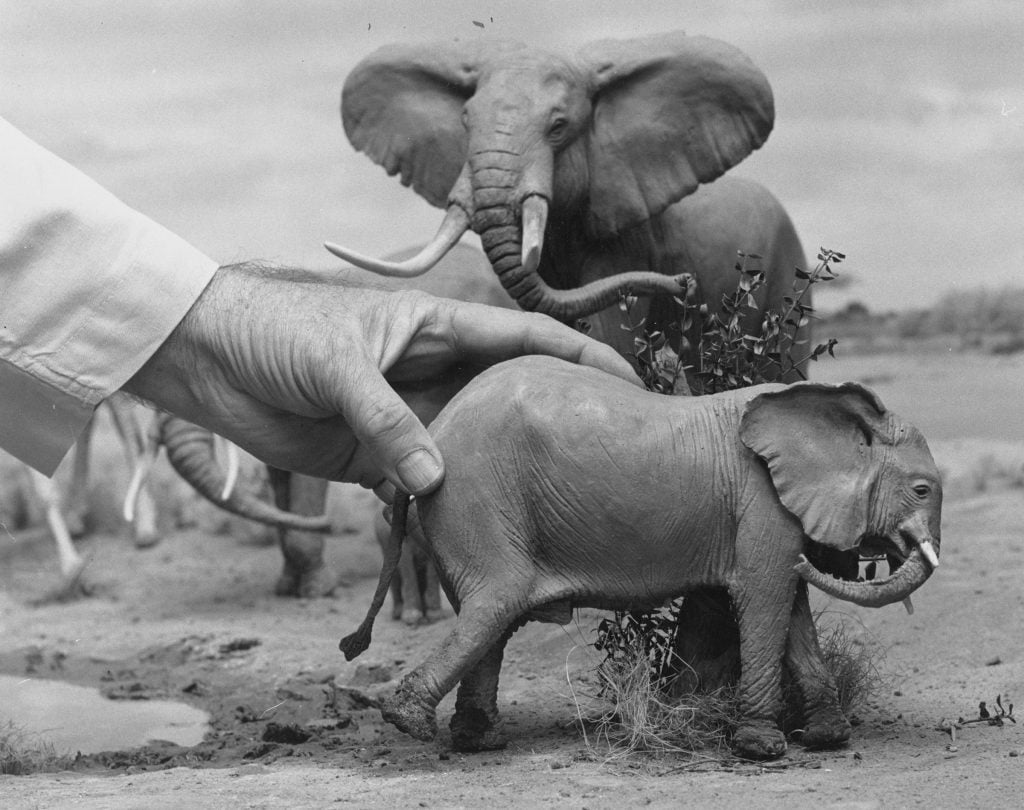
George Adams working on elephant miniature model, 1965. © Natural History Museum of Los Angeles County.
Then again, the museum’s dioramas have never really been “finished.” Uniquely, its bays were enclosed with glass that could be raised, unlike the hermetic seal of most dioramas. It has allowed artists and conservators to refresh the displays over the decades, whether that is to update a taxidermy model or to revise the biodiversity in the foregrounds—or, in the case of the artists participating in “Reframing Dioramas,” to entirely reimagine these tableaux.
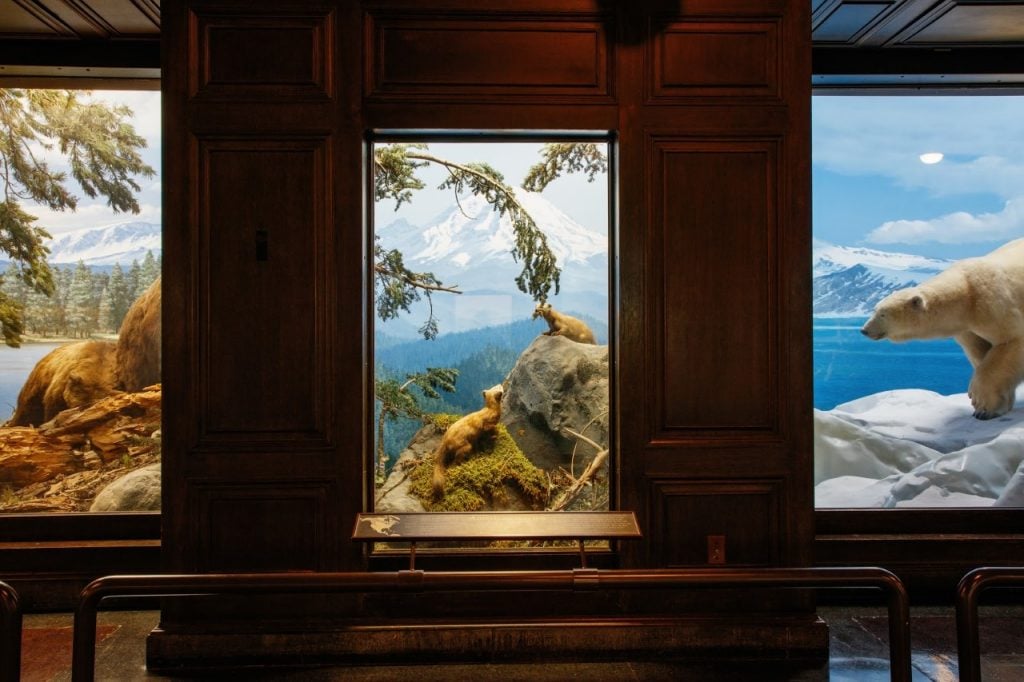
Dioramas at the Natural History Museum of Los Angeles County. Photo courtesy of NHMLAC.
“Reframing Dioramas” takes place in a hall that had been closed since the 1980s due to water damage. Following a refurbishment of its woodwork and lighting (“the dioramas are just glowing because they’ve been in darkness for almost 40 years,” per Davis), the space has reopened in time to participate in the Getty’s PST Art: Art and Science Collide initiative. Ahead of the exhibition, a diorama incubator was launched, alongside an open call for artist proposals for new natural history displays. From the deluge of submissions, three were selected.
Among them is Washington-based artist Saul Becker‘s A Peculiar Garden, a post-apocalyptic landscape populated with electroplated plants and a mound of desiccated twigs, his animals gazing Narcissus-like into a mirrored surface. The scene, Becker told me at the show’s preview, offered him the perfect opportunity to blend his nature-based sculpture and painting practices, while illustrating humanity’s indelible footprint on the environment.
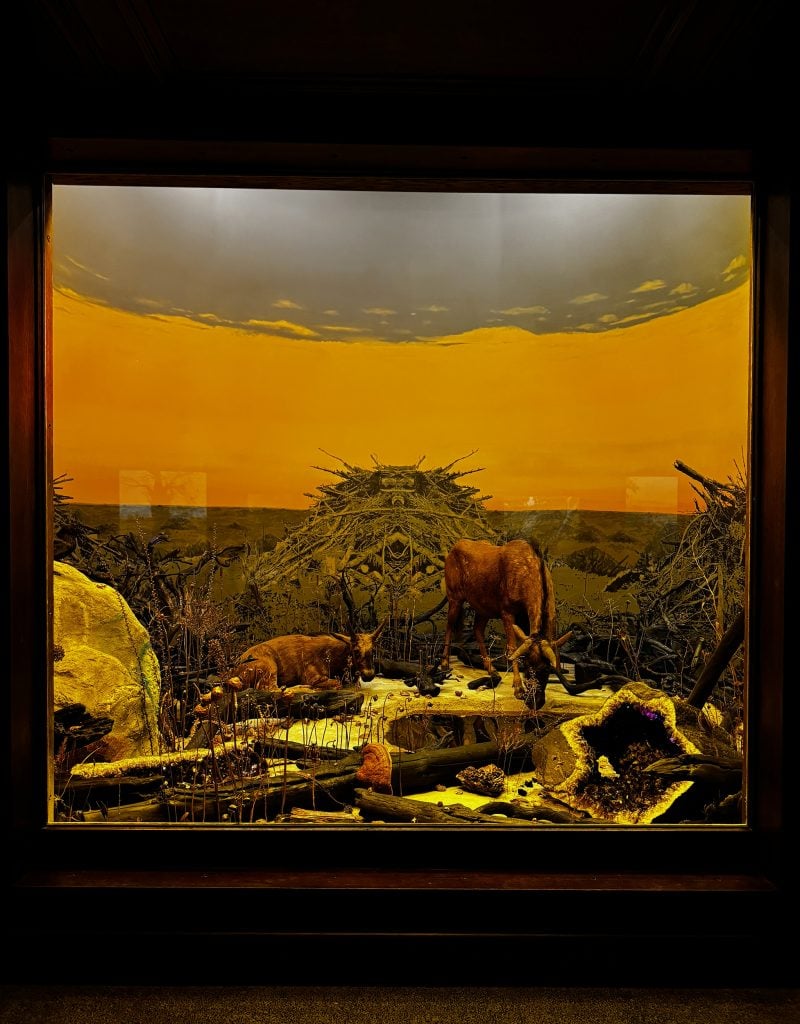
Saul Becker, A Peculiar Garden (2024) at the Natural History Museum of L.A. County. Photo: Min Chen.
“I wanted to highlight the strange, disorienting relationship that we have with nature,” he said. “I didn’t want to create a diorama or an image that was too pastoral; I wanted something sublime, something beautiful, but a little unnourished. Nature really shines a mirror back on humanity.”
In that same vein, L.A. artist Lauren Schoth has used projection mapping in The Ever Changing Flow to illustrate how ecological and manmade change over the ages have reshaped the course of a river that flows through the city. Its twin birds, poised over the ever-morphing vista, remain tellingly static.
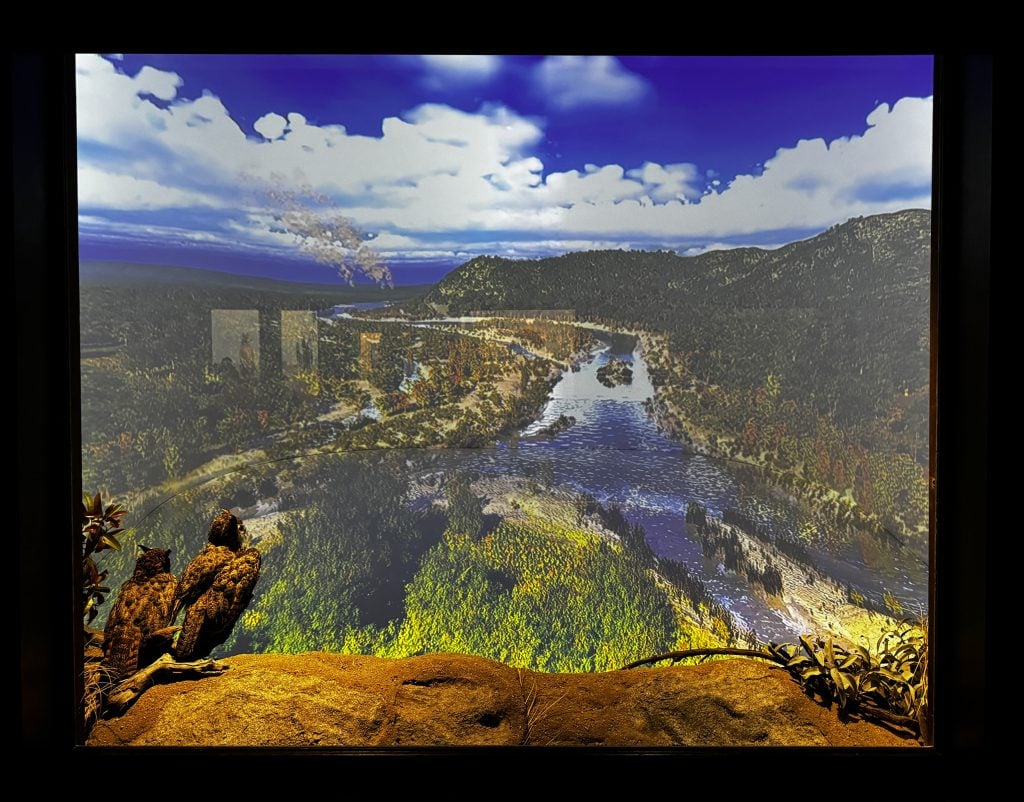
Lauren Schoth, The Ever Changing Flow (2024) at the Natural History Museum of L.A. County. Photo: Min Chen.
Meanwhile, a collective composed of artists Yesenia Prieto, Joel Fernando, and Jason Chang has presented the hall’s most eye-catching display in Special Species: A Delicate Moment in Time. The composition features handcrafted Mexican folk art sculptures of endangered animals, on which projections and lights shift and dance—a representation of the spiritual realm that undergirds California’s natural habitats.
However outré these dioramas, Davis noted, they are all scientifically accurate. The artists worked in close consultation with the museum’s taxidermist Tim Bovard and curatorial team, who provided guidance on everything from species lineups to aesthetic perspectives. Davis pointed out how the Special Species group, in hoping to highlight the region’s endangered species, endeavored to hew closely to California’s list of animals of special concern. “We really care about this,” they told him.
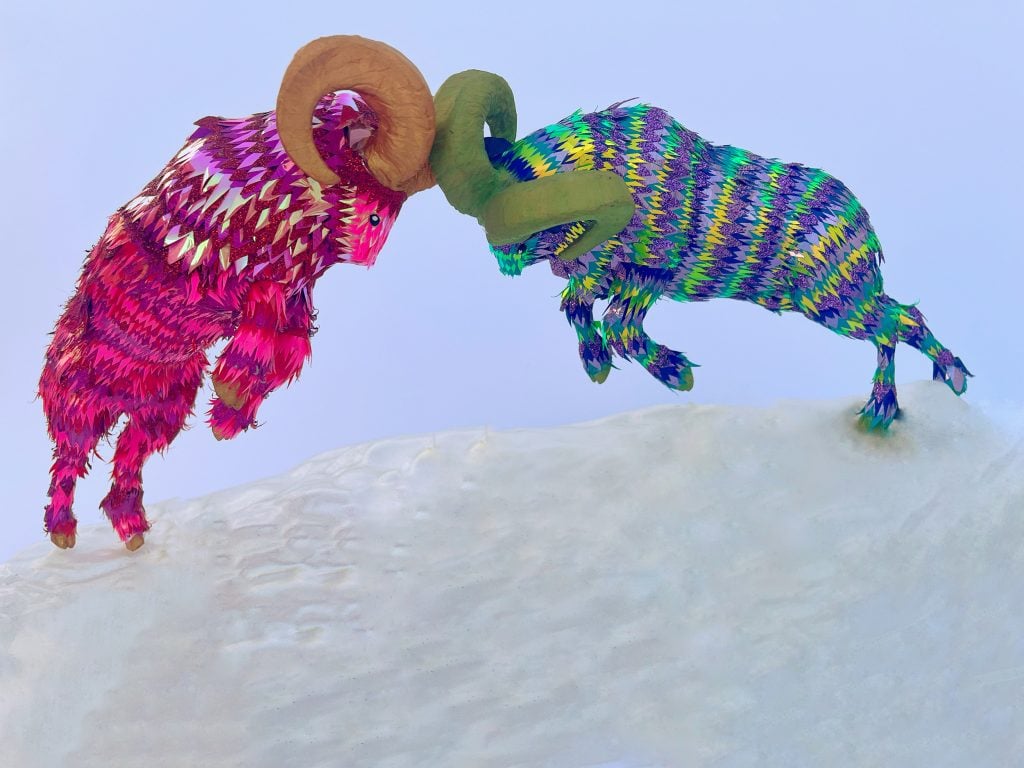
Sierra Nevada Big Horn Sheep created for Special Species: A Delicate Moment in Time (2024) by RFX1 (Jason Chang), Joel Fernando, and Yesenia Prieto. Diorama installation. Photo courtesy of the artist and NHMLAC.
That care, in fact, is what has surprised Davis the most about the artists’ responses to the open call.
“A lot of the artists’ submissions weren’t really trying to destroy the diorama. They really liked the diorama and they wanted to just make their own diorama in their own style,” he said. “It wasn’t necessarily like, ‘Here’s a critique of the diorama or an explosion of it,’ but ‘Let me try to make a diorama the way I think it could be made.'”
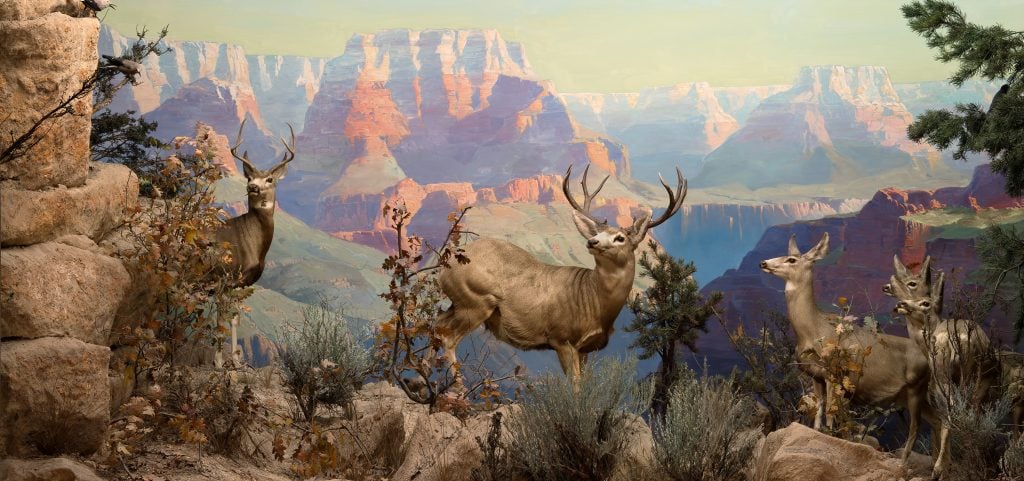
Mule Deer diorama at the Natural History Museum of Los Angeles County. Photo: Mario de Lopez, 2014 © Natural History Museum of Los Angeles County.
Maybe the mold didn’t need to be broken. There is, after all, something to be said about the NHMLAC reopening a hall of dioramas at a time when high-tech, interactive exhibits are the dominant attractions in museums.
This fascination with dioramas is further captured in the exhibition’s accompanying publication, Reframing Wilderness, edited by Davis, which details the institution’s century-long diorama project (including the work of artists Duncan Spencer, Hanson Duvall Puthuff, and Frank J. MacKenzie, among others), as well as the roles of these displays in education and conservation. It’s a loving tribute to an analog art and craft, which, Davis noted, has its enduring charm.
“It’s literally the frame that you put around the diorama. It said ‘these are special,'” he explained. “Maybe not everyone gets that on a conscious level, but when you go into a big hall like ours and you sit down, you’re getting this on a very spiritual level. You know this is something to be in awe of, to look on with wonder.”
“Reframing Dioramas: The Art of Preserving Wilderness” is on view at the Natural History Museum of L.A. County, 900 Exposition Blvd., Los Angeles, California, through September 15, 2025.

